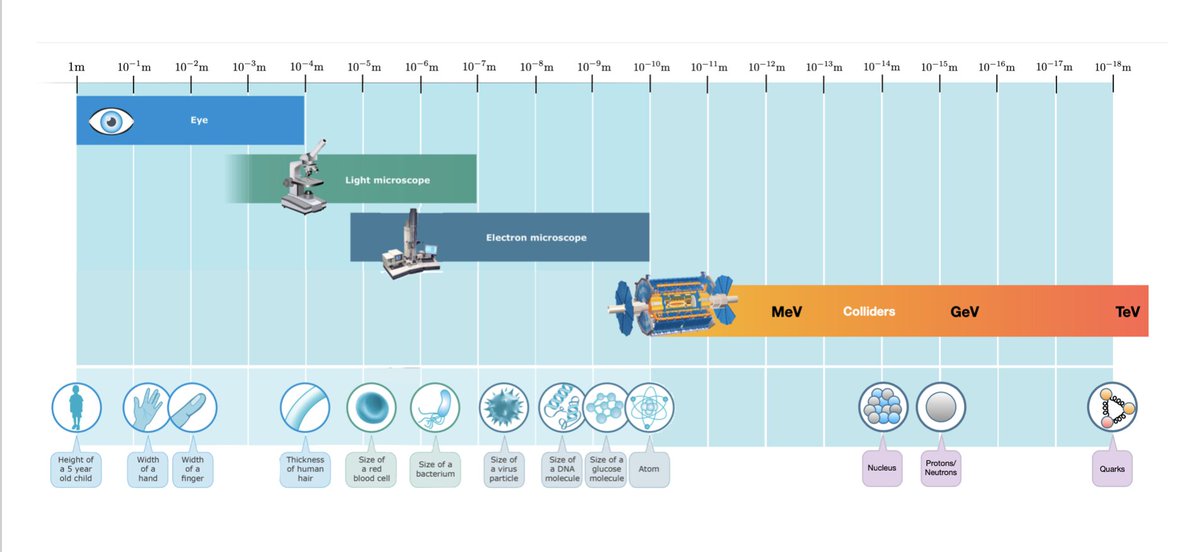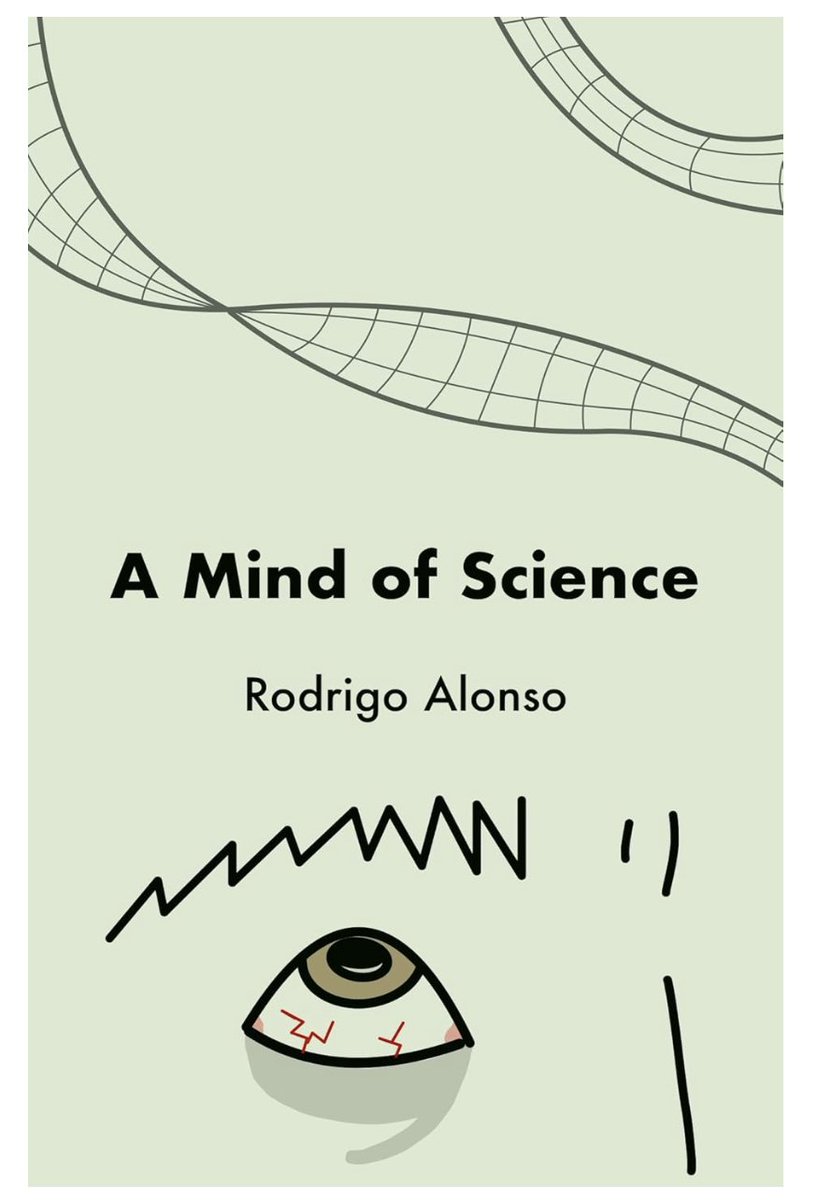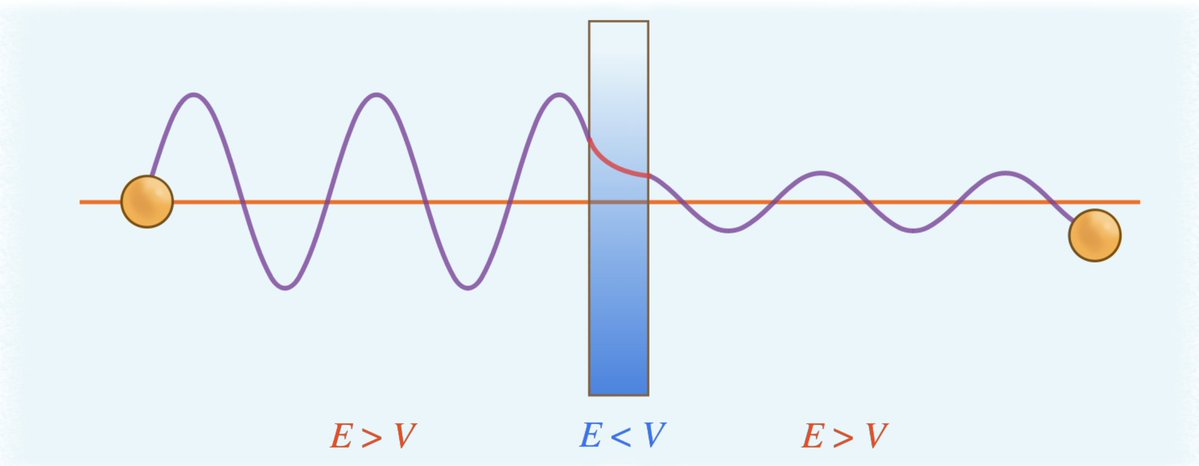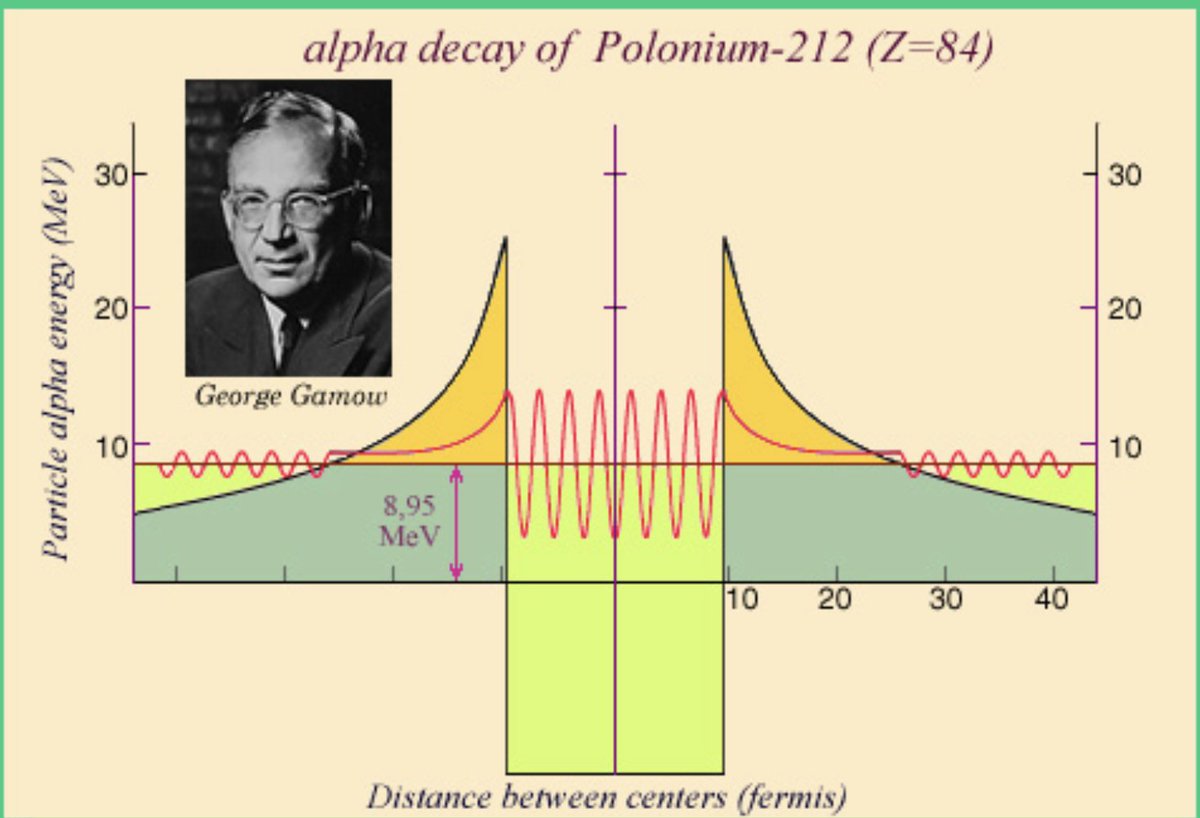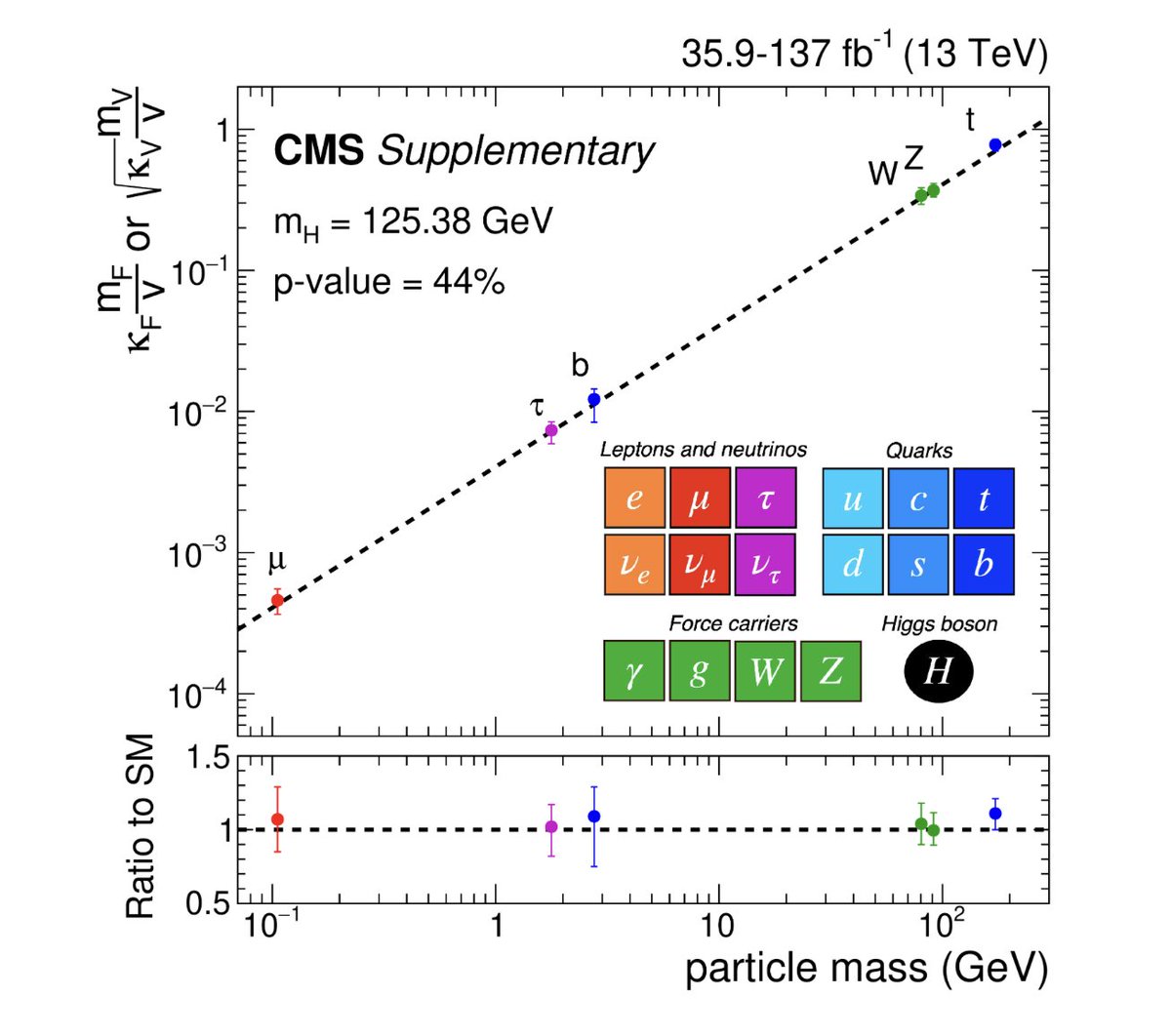The human eye has a severely limited angular resolution. We can't tell apart points that are closer together than 0.02 degrees. This corresponds to a separation of 0.1 mm for points 30cm in front of us -about the thickness of hair. Anything closer together gets smeared out 2/10 

We can do better with lenses. The best light microscopes have a resolution of ~200 nm. This is 2x10^-7 m, about 1000 times better than a human eye. Good enough to look into the interior of cells
3/10
3/10

But there is a limit. The wavelength of visible light is 700-380 nm. The best possible resolution R is roughly half the wavelength λ (even though there are modern techniques to overcome this limit by about an order of magnitude) 4/10 
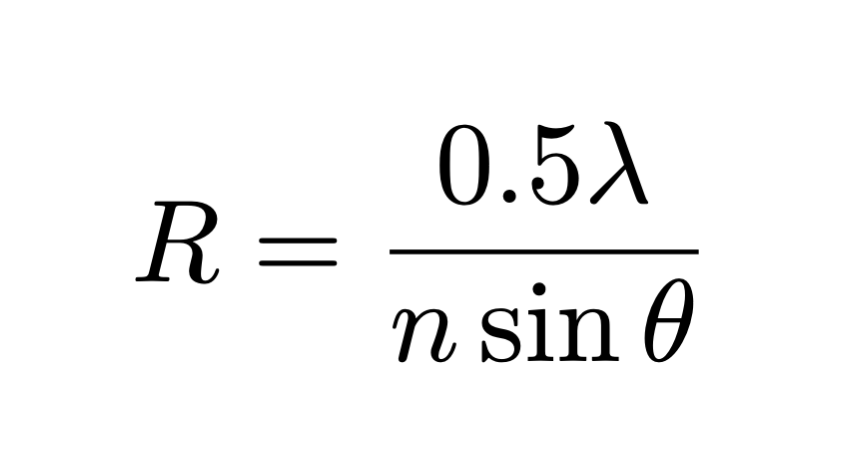
However, quantum mechanics comes to the rescue. Every particle corresponds to a wave with a wavelength λ set by the de Broglie equation, where h is Plancks constant and p is the momentum of the particle 5/10 

If we accelerate for example an electron we will decrease its wavelength and eventually get better resolution than any light miscroscope can achieve.
Indeed, electron microscopes can resolve objects of a size of 10^-10 m: the size of an atom 6/10
Indeed, electron microscopes can resolve objects of a size of 10^-10 m: the size of an atom 6/10
Electron microscopes use high voltage to accelerate electrons, achieving short wavelengths in turn. Alternatively one can look at this as electrons scattering off the target.
Shorter wavelength = higher voltage
As a result ultra high voltage electron miscoscopes are huge 7/10
Shorter wavelength = higher voltage
As a result ultra high voltage electron miscoscopes are huge 7/10

In principle the wavelength can be shortened further.
Achieving the enormous momenta necessary to resolve structures smaller than an atom needs miles of electromagnets: a particle accelerator
Below is an aerial view of the linear accelerator in Stanford (SLAC) 8/10
Achieving the enormous momenta necessary to resolve structures smaller than an atom needs miles of electromagnets: a particle accelerator
Below is an aerial view of the linear accelerator in Stanford (SLAC) 8/10

Particle accelerators can collide a beam of charged particles with a fixed target or with each other.
In that sense colliders are direct generalisations of microscopes with enormously increased resolution. Currently we can probe 7-8 orders of magnitude beyond the best EM 9/10
In that sense colliders are direct generalisations of microscopes with enormously increased resolution. Currently we can probe 7-8 orders of magnitude beyond the best EM 9/10
The debris from the collisions allows for a reconstruction of what the world looks like at these smallest scales in the same way as the reflected light from a macroscopic object is detected by our eyes and allows our brains to reconstruct an image 10/10 

Colliders are limited by size and the power of the electromagnets.
We haven't exhausted this technology yet, but there are novel technologies, like plasma wakefield acelerators. If we can master this, the future best microscopes could look even more alien to us 11/10
We haven't exhausted this technology yet, but there are novel technologies, like plasma wakefield acelerators. If we can master this, the future best microscopes could look even more alien to us 11/10
• • •
Missing some Tweet in this thread? You can try to
force a refresh

